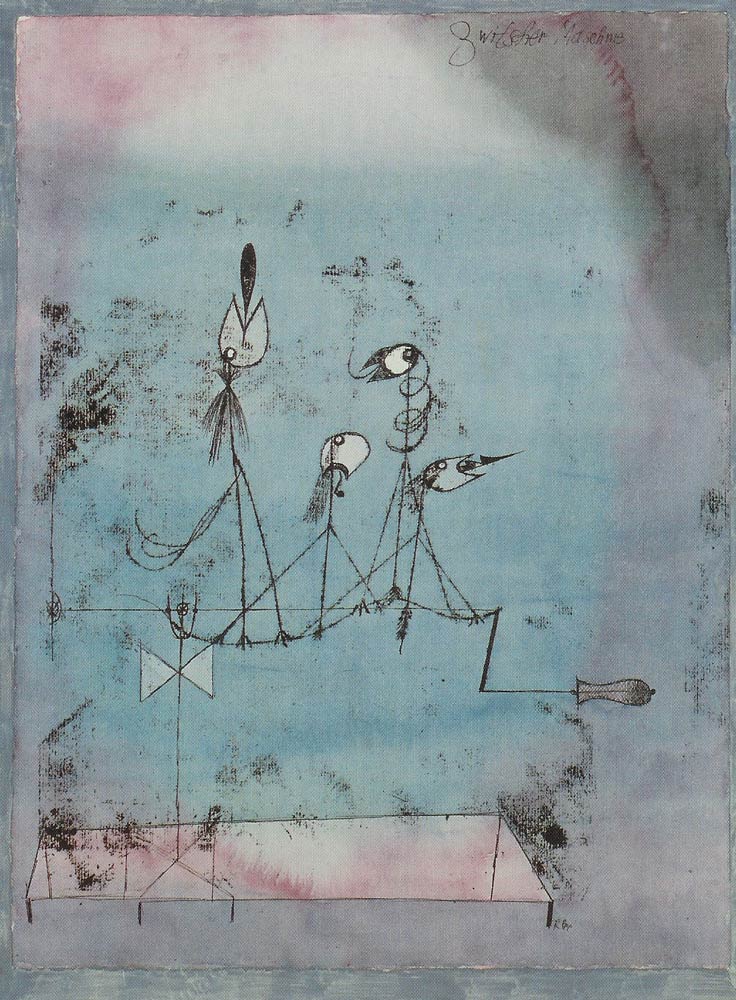| Twittering Machine | |
|---|---|
 |
|
| Artist | Paul Klee |
| Year | 1922 |
| Medium | Watercolor and ink; oil transfer on paper with gouache and ink on border |
| Location | Museum of Modern Art, New York, NY |
| Dimensions | 25.25 in × 19 in |
| 63.8 cm × 48.1 cm | |
| Paul Klee Famous Paintings | |
| Twittering Machine, 1922 | |
| Cat and Bird, 1928 | |
| Senecio, 1922 | |
| Ad Parnassum, 1932 | |
| Castle and Sun, 1928 | |
| Red Balloon, 1922 | |
| Fish Magic, 1925 | |
| Insula Dulcamara, 1938 | |
| Dream City, 1921 | |
| Complete Works |
The delightful but somewhat unsettling Twittering Machine, by Paul Klee, depicts an impossible, fragile looking contraption that holds four mechanical creatures that look like hybrids of birds and elaborate fishing lures.
Balanced precariously on wires and delicate weights attached to a transparent, equally fragile looking base, the device is operated by a crank which causes the birds/fishing lures to “twitter.” The sound they actually make with their weird tongues, one of which looks like a mini-harpoon, and beaks that look like they were been snipped out of metal, varies with the viewer’s imagination.
This ambiguity has caused some art critics to find the painting darker in meaning than a first glance would suggest. The birds are not only tethered forever to wires, but have become unnatural beings forced to chirp whenever anyone turns the crank. In other words, they are interesting, mechanized slaves. Then again, as Klee was a gifted musician as well as a visual artist, might have painted the birds as symbols music itself.
Enchantingly “Foxed”
Painted in 1922, and exhibited for a time at Berlin’s Alte Nationalgalerie, the painting is itself a bit of a hybrid, being an oil transfer of watercolor, pen and ink on paper. The unusual combination allows Klee to set his unlikely machine against a hazy background of blues and purplish pinks. Well placed smudges give the work a feeling of antiquity or the look of a work that’s been a little “foxed,” like the page of a book that’s been neglected and attacked, slightly, by mold. Thus, this work comes to the viewer like an enchanting, unexpected find.
“Degenerate Art”
Now considered sweet and harmless enough to be placed in a child’s bedroom, the painting, only about 25.25 by 19 inches, was considered a piece of degenerate art by the Nazis but fortunately was not destroyed. Instead, after passing through several hands, it is now found in the Museum of Modern Art on Fifth Avenue in New York City, and is one of the museum’s biggest attractions.